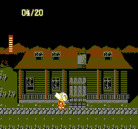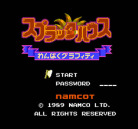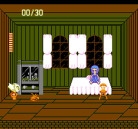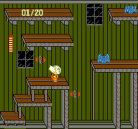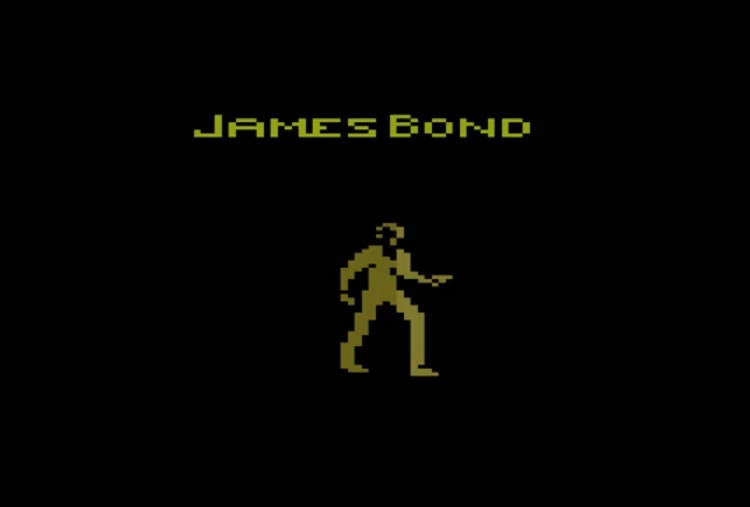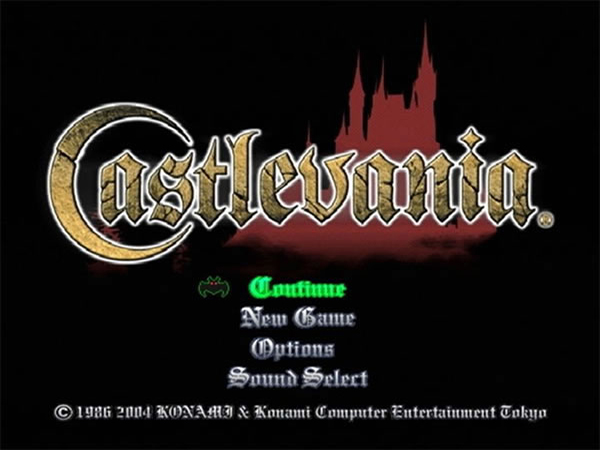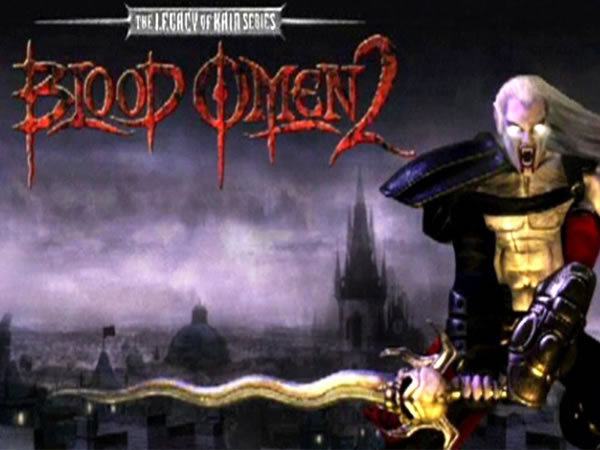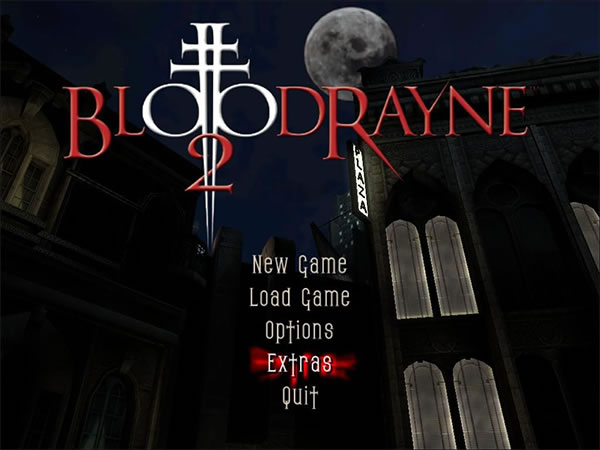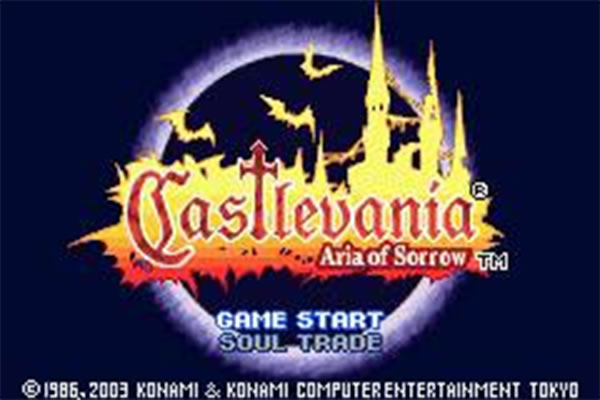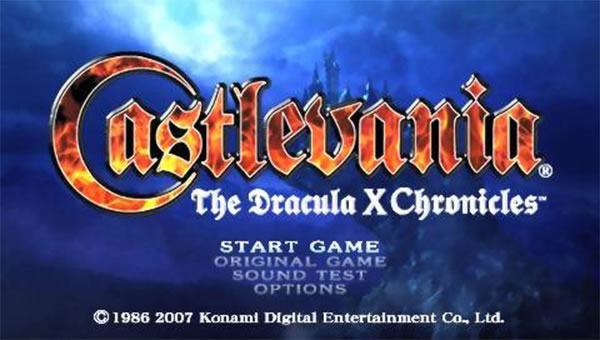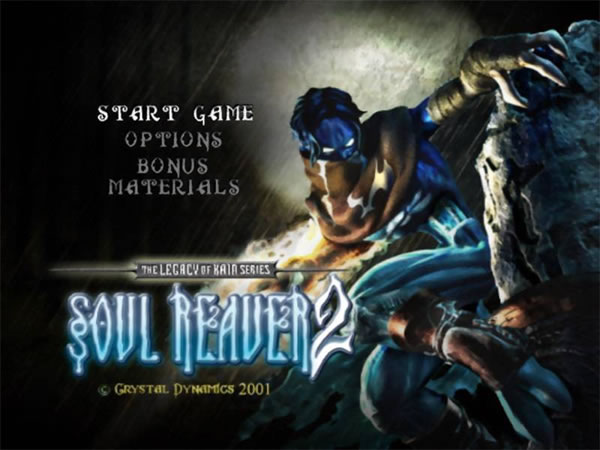- CLASSIC MAGAZINES
- REVIEW CREW
A show recapping what critics thought back
when classic games first came out! - NEXT GENERATION'S BEST & WORST
From the worst 1-star reviews to the best
5-stars can offer, this is Next Generation! - NINTENDO POWER (ARCHIVE)
Experience a variety of shows looking at the
often baffling history of Nintendo Power! - MAGAZINE RETROSPECTIVE
We're looking at the absolutely true history of
some of the most iconic game magazines ever! - SUPER PLAY'S TOP 600
The longest and most ambitious Super NES
countdown on the internet! - THEY SAID WHAT?
Debunking predictions and gossip found
in classic video game magazines! - NEXT GENERATION UNCOVERED
Cyril is back in this spin-off series, featuring the
cover critic review the art of Next Generation! - HARDCORE GAMER MAGAZING (PDF ISSUES)
Download all 36 issues of Hardcore Gamer
Magazine and relive the fun in PDF form!
- REVIEW CREW
- ELECTRONIC GAMING MONTHLY
- ELECTRONIC GAMING MONTHLY RANKS
From Mario to Sonic to Street Fighter, EGM
ranks classic game franchises and consoles! - ELECTRONIC GAMING MONTHLY BEST & WORST
Counting down EGM’s best and worst reviews
going year by year, from 1989 – 2009! - ELECTRONIC GAMING BEST & WORST AWARDS
11-part video series chronicling the ups and
downs of EGM’s Best & Worst Awards!
- ELECTRONIC GAMING MONTHLY RANKS
- GAME HISTORY
- GAME OVER: STORY BREAKDOWNS
Long-running series breaking down game
stories and analyzing their endings! - A BRIEF HISTORY OF GAMING w/ [NAME HERE]
Real history presented in a fun and pithy
format from a variety of game historians! - THE BLACK SHEEP
A series looking back at the black sheep
entries in popular game franchises! - INSTANT EXPERT
Everything you could possibly want to know
about a wide variety of gaming topics! - FREEZE FRAME
When something familiar happens in the games
industry, we're there to take a picture! - I'VE GOT YOUR NUMBER
Learn real video game history through a series
of number-themed episodes, starting at zero! - GREAT MOMENTS IN BAD ACTING
A joyous celebration of some of gaming's
absolute worst voice acting!
- GAME OVER: STORY BREAKDOWNS
- POPULAR SHOWS
- DG NEWS w/ LORNE RISELEY
Newsman Lorne Riseley hosts a regular
series looking at the hottest gaming news! - REVIEW REWIND
Cyril replays a game he reviewed 10+ years
ago to see if he got it right or wrong! - ON-RUNNING FEUDS
Defunct Games' longest-running show, with
editorials, observations and other fun oddities! - DEFUNCT GAMES QUIZ (ARCHIVE)
From online quizzes to game shows, we're
putting your video game knowledge to the test!- QUIZ: ONLINE PASS
Take a weekly quiz to see how well you know
the news and current gaming events! - QUIZ: KNOW THE GAME
One-on-one quiz show where contestants
find out if they actually know classic games! - QUIZ: THE LEADERBOARD
Can you guess the game based on the classic
review? Find out with The Leaderboard!
- QUIZ: ONLINE PASS
- DEFUNCT GAMES VS.
Cyril and the Defunct Games staff isn't afraid
to choose their favorite games and more! - CYRIL READS WORLDS OF POWER
Defunct Games recreates classic game
novelizations through the audio book format!
- DG NEWS w/ LORNE RISELEY
- COMEDY
- GAME EXPECTANCY
How long will your favorite hero live? We crunch
the numbers in this series about dying! - VIDEO GAME ADVICE
Famous game characters answer real personal
advice questions with a humorous slant! - FAKE GAMES: GUERILLA SCRAPBOOK
A long-running series about fake games and
the people who love them (covers included)! - WORST GAME EVER
A contest that attempts to create the worst
video game ever made, complete with covers! - LEVEL 1 STORIES
Literature based on the first stages of some
of your favorite classic video games! - THE COVER CRITIC
One of Defunct Games' earliest shows, Cover
Critic digs up some of the worst box art ever! - COMMERCIAL BREAK
Take a trip through some of the best and
worst video game advertisements of all time! - COMIC BOOK MODS
You've never seen comics like this before.
A curious mix of rewritten video game comics!
- GAME EXPECTANCY
- SERIES ARCHIVE
- NINTENDO SWITCH ONLINE ARCHIVE
A regularly-updated list of every Nintendo
Switch Online release, plus links to review! - PLAYSTATION PLUS CLASSIC ARCHIVE
A comprehensive list of every PlayStation
Plus classic release, including links! - RETRO-BIT PUBLISHING ARCHIVE
A regularly-updated list of every Retro-Bit
game released! - REVIEW MARATHONS w/ ADAM WALLACE
Join critic Adam Wallace as he takes us on a
classic review marathon with different themes!- DEFUNCT GAMES GOLF CLUB
Adam Wallace takes to the links to slice his way
through 72 classic golf game reviews! - 007 IN PIXELS
Adam Wallace takes on the world's greatest spy
as he reviews 15 weeks of James Bond games! - A SALUTE TO VAMPIRES
Adam Wallace is sinking his teeth into a series
covering Castlevania, BloodRayne and more! - CAPCOM'S CURSE
Adam Wallace is celebrating 13 days of Halloween
with a line-up of Capcom's scariest games! - THE FALL OF SUPERMAN
Adam Wallace is a man of steel for playing
some of the absolute worst Superman games! - THE 31 GAMES OF HALLOWEEN
Adam Wallace spends every day of October afraid
as he reviews some of the scariest games ever! - 12 WEEKS OF STAR TREK
Adam Wallace boldly goes where no critic has
gone before in this Star Trek marathon!
- DEFUNCT GAMES GOLF CLUB
- DAYS OF CHRISTMAS (ARCHIVE)
Annual holiday series with themed-episodes
that date all the way back to 2001!- 2015: 30 Ridiculous Retro Rumors
- 2014: 29 Magazines of Christmas
- 2013: 29 Questionable Power-Ups of Christmas
- 2012: 34 Theme Songs of Christmas
- 2011: 32 Game Endings of Christmas
- 2010: 31 Bonus Levels of Christmas
- 2009: 30 Genres of Christmas
- 2008: 29 Controls of Christmas
- 2007: 34 Cliches of Christmas
- 2006: 33 Consoles of Christmas
- 2005: 32 Articles of Christmas
- 2004: 31 Websites of Christmas
- 2003: 29 Issues of Christmas
- 2002: 28 Years of Christmas
- 2001: 33 Days of Christmas
- NINTENDO SWITCH ONLINE ARCHIVE
- REVIEW ARCHIVE
- FULL ARCHIVE
Splatterhouse: Wanpaku Graffiti
Splatterhouse has never been a top-tier game franchise. In a time when it seemed like every video game company was walking on eggshells, Splatterhouse was sold on the idea of blood, guts and all sorts of other gruesomeness. It was the brawler for people that were sick of street gangs and mutant animals. Even with simple gameplay and straight-forward level structure, Namco's horror franchise seemed to work.
Although many gamers remember Splatterhouse as a TurboGrafx-16 game, it was not this franchise's first home console release. That honor goes to Splatterhouse: Wanpaku Graffiti, an obscure 1989 Famicom game. Despite the success of the series in both the U.S. and Europe, Namco never ported this 2D action game to the Nintendo Entertainment System. And even today, 21 years later, the game remains hard to find.
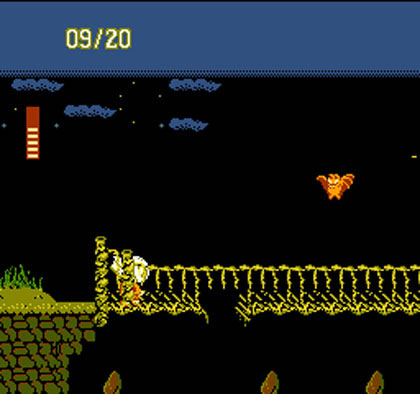
In a wise move, Splatterhouse: Wanpaku Graffiti doesn't attempt to recreate the 16-bit action of the original arcade game. Instead it gives us a brand new adventure, complete with different enemies and exciting new levels. And you know what? The whole thing is a lot more fun than it deserves to be. Dare I say, it's actually better than the more technically advanced games it was born out of.
The idea is still the same; you play Rick, the masked hero of the arcade game. As the game starts, we learn that Rick has died and left Jennifer to cry over his grave. But out of nowhere comes a lightning bolt, which magically brings our hero back to life. Unfortunately, another lightning bolt brings the Pumpkin King back to life, who quickly kidnaps Jennifer and we start the whole dance over again.
But don't get to comfortable, because Splatterhouse: Wanpaku Graffiti has a major twist up its sleeve. The ending is genuinely shocking, not something you tend to say about an 8-bit horror game. I'm not saying that the big reveal is on the same level as The Sixth Sense or Psycho, but it's significantly better than what we were getting in 1989.
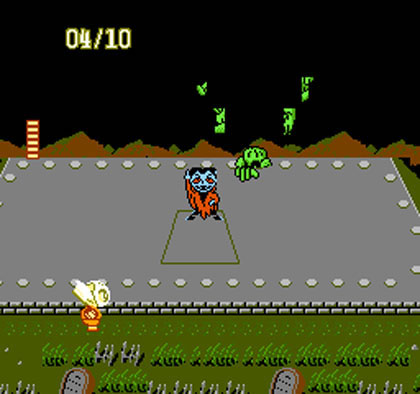
There are a few interesting twists to the Splatterhouse theme. For one thing, you gain experience every time you kill an enemy. The more baddies you take down, the more life you will have. You'll need this additional life to take on the insane boss battles, many of which resemble fights you had in the arcade, TurboGrafx and Genesis games. This one change may not sound like much, but it's significantly deeper than these games usually are.
Unfortunately, the trade-off is a lack of additional weapons. Players get a single battle axe, which never seems to dull or get bloody. I also found that the backgrounds repeated a bit too much. And like most 8-bit games, there are a few too many cheap deaths. Splatterhouse is made even worse by only giving you one life and four continues.
Splatterhouse: Wanpaku Graffiti sports seven unique levels, along with two secret bonus stages. These nine levels offer you some traditional Splatterhouse locales, including a graveyard, hell house and spooky campground. But don't get too cozy, because the secret stages take our hero around the world. In the first secret stage our masked axeman will be flown to Japan to take on undead nasties.
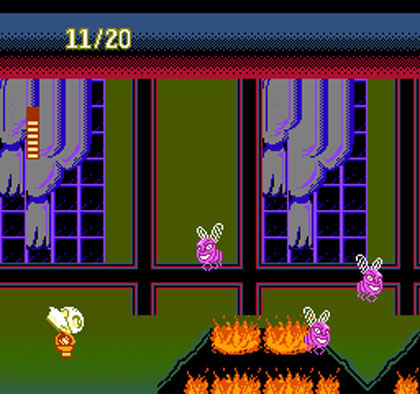
The tone is decidedly goofier this time around, which is a wise decision given the technical limitations. It's hard to take a game seriously when everybody has super-deformed heads. Even if you took away the oversized heads, players would still be left with a bloodless game where everything comes straight out of a Looney Tunes cartoon. Fans of the main series may disagree, but I would argue that the cartoony visuals help this game hold up better than its 16-bit brothers.
This 8-bit Splatterhouse is far from perfect, yet even when I was suffering through cheap deaths, I still found myself wanting to come back for more. I love the tongue-in-cheek sense of humor, and there's no getting around the game's stellar twist ending. It may not be the most technologically advanced game in the series, but Splatterhouse: Wanpaku Graffiti is worth the experience.
Although many gamers remember Splatterhouse as a TurboGrafx-16 game, it was not this franchise's first home console release. That honor goes to Splatterhouse: Wanpaku Graffiti, an obscure 1989 Famicom game. Despite the success of the series in both the U.S. and Europe, Namco never ported this 2D action game to the Nintendo Entertainment System. And even today, 21 years later, the game remains hard to find.

In a wise move, Splatterhouse: Wanpaku Graffiti doesn't attempt to recreate the 16-bit action of the original arcade game. Instead it gives us a brand new adventure, complete with different enemies and exciting new levels. And you know what? The whole thing is a lot more fun than it deserves to be. Dare I say, it's actually better than the more technically advanced games it was born out of.
The idea is still the same; you play Rick, the masked hero of the arcade game. As the game starts, we learn that Rick has died and left Jennifer to cry over his grave. But out of nowhere comes a lightning bolt, which magically brings our hero back to life. Unfortunately, another lightning bolt brings the Pumpkin King back to life, who quickly kidnaps Jennifer and we start the whole dance over again.
But don't get to comfortable, because Splatterhouse: Wanpaku Graffiti has a major twist up its sleeve. The ending is genuinely shocking, not something you tend to say about an 8-bit horror game. I'm not saying that the big reveal is on the same level as The Sixth Sense or Psycho, but it's significantly better than what we were getting in 1989.

There are a few interesting twists to the Splatterhouse theme. For one thing, you gain experience every time you kill an enemy. The more baddies you take down, the more life you will have. You'll need this additional life to take on the insane boss battles, many of which resemble fights you had in the arcade, TurboGrafx and Genesis games. This one change may not sound like much, but it's significantly deeper than these games usually are.
Unfortunately, the trade-off is a lack of additional weapons. Players get a single battle axe, which never seems to dull or get bloody. I also found that the backgrounds repeated a bit too much. And like most 8-bit games, there are a few too many cheap deaths. Splatterhouse is made even worse by only giving you one life and four continues.
Splatterhouse: Wanpaku Graffiti sports seven unique levels, along with two secret bonus stages. These nine levels offer you some traditional Splatterhouse locales, including a graveyard, hell house and spooky campground. But don't get too cozy, because the secret stages take our hero around the world. In the first secret stage our masked axeman will be flown to Japan to take on undead nasties.

The tone is decidedly goofier this time around, which is a wise decision given the technical limitations. It's hard to take a game seriously when everybody has super-deformed heads. Even if you took away the oversized heads, players would still be left with a bloodless game where everything comes straight out of a Looney Tunes cartoon. Fans of the main series may disagree, but I would argue that the cartoony visuals help this game hold up better than its 16-bit brothers.
This 8-bit Splatterhouse is far from perfect, yet even when I was suffering through cheap deaths, I still found myself wanting to come back for more. I love the tongue-in-cheek sense of humor, and there's no getting around the game's stellar twist ending. It may not be the most technologically advanced game in the series, but Splatterhouse: Wanpaku Graffiti is worth the experience.
HOME |
CONTACT |
NOW HIRING |
WHAT IS DEFUNCT GAMES? |
NINTENDO SWITCH ONLINE |
RETRO-BIT PUBLISHING
Retro-Bit |
Switch Planet |
The Halcyon Show |
Same Name, Different Game |
Dragnix |
Press the Buttons
Game Zone Online | Hardcore Gamer | The Dreamcast Junkyard | Video Game Blogger
Dr Strife | Games For Lunch | Mondo Cool Cast | Boxed Pixels | Sega CD Universe | Gaming Trend
Game Zone Online | Hardcore Gamer | The Dreamcast Junkyard | Video Game Blogger
Dr Strife | Games For Lunch | Mondo Cool Cast | Boxed Pixels | Sega CD Universe | Gaming Trend
Copyright © 2001-2025 Defunct Games
All rights reserved. All trademarks are properties of their respective owners.
All rights reserved. All trademarks are properties of their respective owners.






